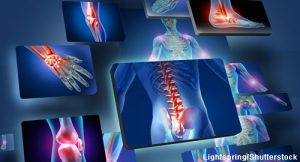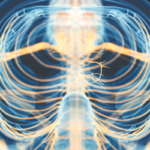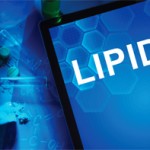 ATLANTA—In the future, resolving inflammation may not be limited to administering therapies that target the mediators that cause inflammation. Instead, we may be able to focus on endogenetic mechanisms. As described during the session Resolving Inflammation in Autoimmune Disease at the 2019 ACR/ARP Annual Meeting, research continues to show great promise in this area.
ATLANTA—In the future, resolving inflammation may not be limited to administering therapies that target the mediators that cause inflammation. Instead, we may be able to focus on endogenetic mechanisms. As described during the session Resolving Inflammation in Autoimmune Disease at the 2019 ACR/ARP Annual Meeting, research continues to show great promise in this area.
Charles N. Serhan, MD, PhD, DSc, Simon Gelman Professor of Anaesthesia at Harvard Medical School and director of the Center for Experimental Therapeutics and Reperfusion Injury, Brigham and Women’s Hospital, Boston, calls the specialized molecules he is focused on a “superfamily of mediators,” powerful enough to stop inflammation.1 Although that might sound like a pretentious description for miniscule molecules, he said ongoing research shows the impact they may have on patients suffering from chronic inflammation diseases could be enormous.
For a long time, it was believed inflammation, whether due to foreign microbes, injuries or other threats, can disappear or progress to chronic inflammation. Dr. Serhan explained, “This was thought to be a passive process, meaning the chemical mediators brought into the cells would simply dilute and wash away, and that would bring about resolution. But by studying self-limited acute inflammatory responses in a number of animal models, we found that resolution is a biosynthetically active process, controlled by mediators and receptor-signaling pathways. These are driven by a whole family of specialized pro-resolving mediators, or simply, SPMs.”
According to Dr. Serhan, the first SPMs identified were resolvins.2-4 Three other lipid-derived, potent mediator families of SPMs are also involved in resolution of inflammation: lipoxins, protectins and maresins. All these bioactive metabolomes stimulate self-limited innate responses and enhance innate microbial killing and clearance, while protecting organs.
It’s important to recognize a principal distinction: “Anti-inflammatory is not equivalent to pro-resolution, and resolution of inflammation is an active process with the biosynthesis of resolvins and other SPMs that stimulate active resolution programs,” Dr. Serhan said.
New Therapeutic Strategies
Resolvin D3 (RvD3) and 17R-resolvin D1 (RvD1) each offer examples for new therapeutic strategies combining potent anti-inflammatory and tissue-protective properties in inflammatory arthritis. Dr. Serhan said they reduce cellular infiltrate and local pro-inflammatory lipid mediators. In addition, they turn on specialized pro-resolving lipid mediators, regulate a number of gene expressions and protect cartilage. In animal models of rheumatoid arthritis, RvD1 and RvD3 have been shown to reduce inflammation and protect bone.5
Because vagal stimulation impacts inflammation, Dr. Serhan said his lab has examined human and mouse vagus nerves ex vivo to determine if they produce lipid mediators. “We found the human vagus [nerve] produces lipid mediators, both eicosanoids (prostaglandins and leukotrienes), as well as the SPMs, including resolvins [Rvs], protectins and maresins,” he said.6
Using targeted lipid mediator metabololipidomics, Dr. Serhan and his research team were able to identify lipoxins, Rvs and protectins produced by both human and mouse vagus nerves. They found that human vagus nerves produced SPMs on stimulation that differed from mice. They also found that electrical vagus nerve stimulation increased SPMs in both human and mouse vagus nerves, as did incubations with Escherichia coli. And, electrical vagus nerve stimulation increased SPMs and decreased PGs and leukotrienes.7
“These results,” said Dr. Serhan, “provide direct evidence that electrical stimulation of the human vagus [nerve] reduces eicosanoids and increases pro-resolving mediators, including the resolvins, protectins and maresins, that stimulate resolution of inflammation and infections.” He added that this opens the potential for developing bioelectric medicine with clear molecular mechanisms of action in activating resolution of inflammation via vagal stimulation.
Based on his lab’s work and other research by colleagues, Dr. Serhan said enormous potential exists for not just resolving inflammation in a whole host of diseases, including arthritis, and also tissue protection for the myocardium, kidneys, lungs, corneas and retinas. “Tissue repair [and] wound healing are areas we’re studying right now, and we’re finding SPMs are 100–1,000 times more potent than NSAIDs [non-steroidal anti-inflammatory drugs] in these [mouse] models.”8
Another area that holds promise, said Dr. Serhan, “and which came as a big surprise to us,” was infection control. He said SPMs may help combat bacterial sepsis, pneumonia and viral keratitis.
A Sheepish Admission
George Schett, MD, professor of internal medicine in the Department of Medicine at the University of Erlangen-Nürnberg, Erlangen, Germany, has his own pet nickname for something he is investigating. “By chance, we began looking at interleukin (IL) 9, which is actually the black sheep of the cytokines,” he explained.
Dr. Schett said that although lipid mediators, such as resolvins, have been associated with the resolution of inflammation, research about the role of cytokine pathways that manage them has been largely ignored. “This was certainly true for IL-9, which was first described in the late 1980s as a cytokine with many promising biological roles in the immune system.”9
The good news, Dr. Schett said, was that interest in IL-9 has re-emerged, including in his own lab and in other research initiatives. Specifically, he said, researchers are finding IL-9 plays a role in regulating inflammatory immunity and the transcription factors that activate the IL-9 gene in IL-9-producing cells, which are essential for the initiation of the resolution process.
The cytokine and cellular pathways triggering arthritis are well known, Dr. Schett said, but those responsible for inflammation resolution are not.10-12
In a 2018 mice study co-authored by Dr. Schett, researchers identified IL-9-producing type 2 innate lymphoid cells (ILC2s) as a molecular and cellular pathway that manages resolution of chronic inflammation. The researchers found the absence of IL-9 impaired ILC2 proliferation, and activation of regulatory T cells resulted in chronic arthritis with cartilage destruction and bone loss.
“In contrast,” the researchers wrote, “Treatment with IL-9 promoted ILC2-dependent Treg activation and effectively induced resolution of inflammation and protection of bone. Patients with rheumatoid arthritis in remission exhibited high numbers of IL-9+ ILC2s in joints and the circulation. Hence, fostering IL-9-mediated ILC2 activation may offer a novel therapeutic approach inducing resolution of inflammation rather than suppression of inflammatory responses.”13
“[Although] IL-9 is still a black sheep,” said Dr. Schett, “it’s being recognized as a very special sheep. That’s because IL-9 is the only cytokine that triggers the resolution of inflammation.”
Mike Fillon is a healthcare writer living in the Atlanta area.
References
- Serhan CN, Levy BD. Resolvins in inflammation: Emergence of the pro-resolving superfamily of mediators. J Clin Invest. 2018 Jul 2;128(7):2657–2669.
- Serhan CN, Savill J. Resolution of inflammation: The beginning programs the end. Nat Immunol. 2005 Dec;6(12):1191–1197.
- Serhan CN. Novel lipid mediators and resolution mechanisms in acute inflammation: To resolve or not? Am J Pathol. 2010 Oct;177(4):1576–1591.
- Serhan C, Chiang N, Dalli, J. The resolution code of acute inflammation: Novel pro-resolving lipid mediators in resolution. Semin Immunol. 2015 May;27(3):200–2
- Pavlov VA, Tracey KJ. Neural regulation of immunity: Molecular mechanisms and clinical translation. Nat Neurosci. 2017 Feb;20(2):156–166.
- Mirakai V, Dalli J, Granja T, et al. Vagus nerve controls resolution and pro-resolving mediators of inflammation. J Exp Med. 2014 Jun 2;211(6):1037–1048.
- Serhan C, de la Rosa X, Jouvene X, et al. Cutting edge: Human vagus produces specialized proresolving mediators of inflammation with electrical stimulation reducing proinflammatory eicosanoids. J Immunol. 2018 Dec 1;201(11):3161–
- Luo X, Gu Y, Tao X, et. al. Resolvin D5 inhibits neuropathic and inflammatory pain in male but not female mice: Distinct actions of D-series resolvins in chemotherapy-induced peripheral neuropathy. Front Pharmacol. 2019 Jul 5;10:745.
- Goswami R, Kaplan MH. A brief history of IL-9. J Immunol. 2011 Mar 15;186(6):3283–3288.
- Rauber S, Luber M, Weber S, et al. Resolution of inflammation by interleukin-9-producing type 2 innate lymphoid cells. Nat Med. 2017 Aug;23(8):938–944.
- McInnes I, Schett G. The pathogenesis of rheumatoid arthritis. N Engl J Med. 2011 Dec 8;365(23):2205–2219.
- Schett G, Elewaut D, McInnes IB, et al. How cytokine networks fuel inflammation: Toward a cytokine-based disease taxonomy. Nat Med. 2013 Jul;19(7):822–824.
- Omata Y, Frech M, Primbs T, et al. Group 2 innate lymphoid cells attenuate inflammatory arthritis and protect from bone destruction in mice. Cell Rep. 2018 Jul 3;24(1):169–180.


